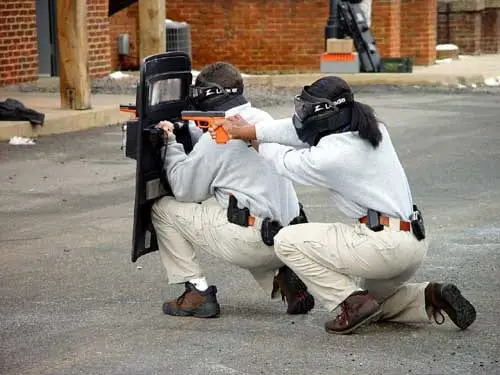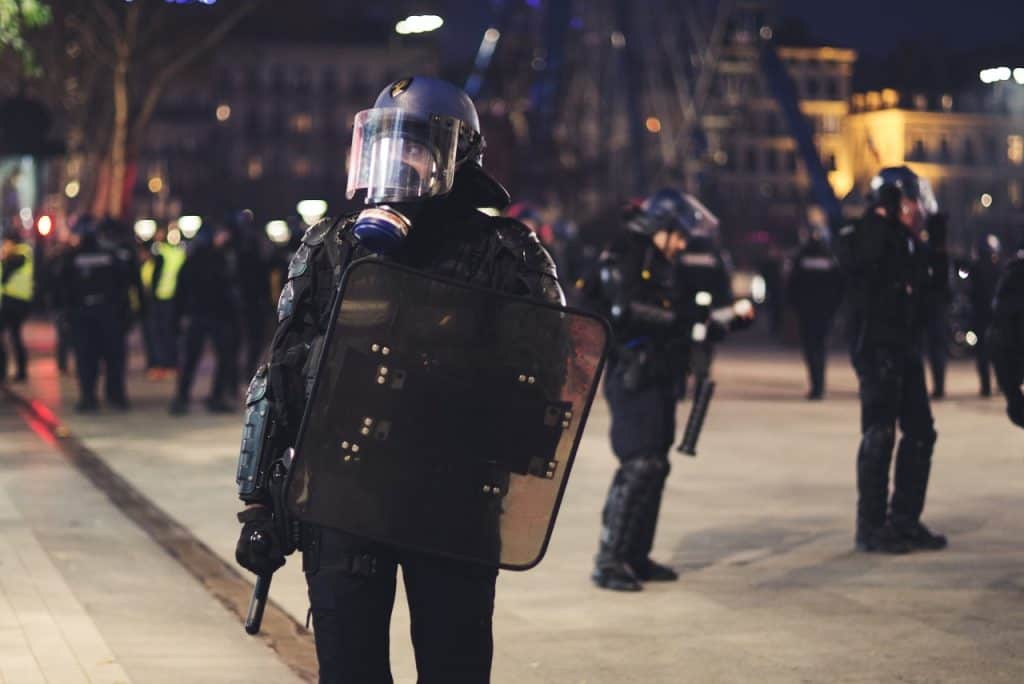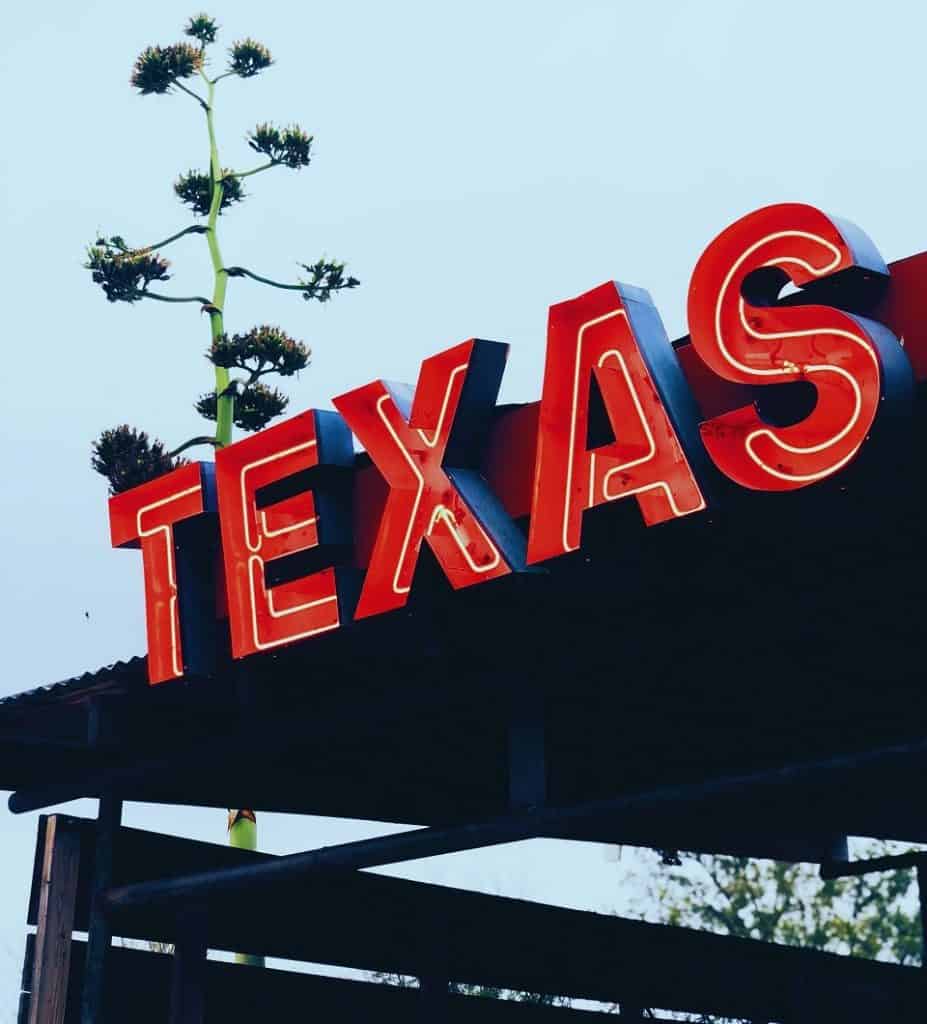If you’re considering a career in law enforcement, it is entirely likely that you’re passionate about justice and helping people uphold the law. It might also be because you grew up watching Law & Order and think it would be pretty cool to become a cop. Either way, working in law enforcement is one of the most fulfilling careers you could ever pursue.
While you’ll certainly learn everything you need to become a police officer in college and police academy, it doesn’t hurt to familiarize yourself with some law enforcement basics that any up-standing citizen needs to be aware of anyway.
Without further ado, here’s an in-depth look at the basics of law enforcement.
The Basics of Law Enforcement
If you’re invested in the public safety of the members of your community and want to work for a specific law enforcement agency, here are the answers to some of the most frequently asked questions about the profession.
What Does It Mean to Enforce a Law?
You’ve probably come across the phrase “law enforcement” before, but have you ever stopped to think about what it means to “enforce a law.” Well, it’s just a fancy way of ensuring that the existing laws are being obeyed or followed.
Why Is Law Enforcement so Important?
Rules, rules, rules… wouldn’t it be great if we could do away with all the laws and simply live our lives as free spirits? Well, contrary to what you might think, laws exist to keep everyone in the community safe and protect everyone’s rights and liberties.
Law enforcement makes sure everyone plays by the rules. With no laws defining what’s right and wrong, the balance of power would shift to a few individuals who would have total control over the distribution of resources, opportunities, wealth creation… and you know what that would turn into, right? Complete anarchy.
Law enforcement makes sure that you can get up in the morning, go to your job, or class, or the grocery store without having to worry about someone getting in the way of you doing that freely.
Which Branch of Government Administers and Enforces Criminal Laws?

Not all superheroes wear capes. Unless, of course, you consider police uniforms a kind of superhero outfit? (The real-kind, people…)
If you think about it, it really should – considering all the work they do to keep citizens on the straight and narrow. Here’s a quick government class refresher for you:
The US government consists of three branches. There’s Congress, which is the law-making arm, the judiciary which is responsible for interpreting all the laws of the land and the executive, which is the law enforcement arm.
Which Branch of Government Is Responsible for Enforcing the Laws?
The executive branch of government, with the head of state at its helm, is solely responsible for enforcing the laws. What you might not be aware of is that the president acts as both the head of state and the commander-in-chief of the US armed forces.
Fifteen independent federal agencies make up the executive branch. Their work is to enforce the laws enacted by Congress. They include the Departments of:
- Agriculture
- Commerce
- Defense
- Education
- Energy
- Health and Human Services
- Homeland Security
- Housing and Urban Development
- Interior
- Justice
- Labor
- State
- Transpiration
- Treasury
- Veteran’s Affairs
Each of these departments has a specific budget they’re given to work with annually to ensure that they execute their mandate.
Who Makes Sure the Laws Are Carried out and Enforced?
The executive arm of the government is tasked with enforcing the laws enacted by the legislative arm – which in this case, is the US Congress. The power of the executive is vested in the president. It is this power that cascades down to the 15 independent federal agencies whose function is to enforce the laws.
How Many Law Enforcement Agencies in USA?
All law enforcement agencies are federal agencies, but not all federal agencies are law enforcement agencies. There are roughly 18,000 law enforcement agencies, which includes local, country, state, and federal agencies.
Each of these has varying geographical and legal jurisdictions with different departments having anywhere between one and well over 30,000 officers. Law enforcement agencies fall squarely under the Department of Justice and Homeland Security.

How Many Law Enforcement Officers in America?
According to the latest report from the Bureau of Justice Statistics, there are an estimated 100,000 full-time federal law enforcement officers in the US and its territories working for:
- Customs and Border Protection
- Immigration and Customs Enforcement
- The Federal Bureau of Investigation
- The Federal Bureau of Prisons
The sworn officers who serve in a general-purpose capacity at state and local law enforcement agencies, on the other hand, total more than 700,000.
Alphabet Soup and Law Enforcement
If there’s one thing you’ll need to pick up on quickly when getting into law enforcement, it’s the massive compilation of slang, jargon, acronyms, and abbreviations they use on a day-to-day basis. Here are the most popular ones.

What Does ADA Stand for in Law Enforcement?
ADA is short for the Americans with Disabilities Act. It is a federal civil rights legislation that was signed into law by President George H.W. Bush on July 26, 1990. The purpose of ADA is to protect individuals who have any form of disability. This any physical or mental impairment that inhibits an individual’s ability to carry out normal day-to-day activities.
You’re now likely wondering what ADA has to do with law enforcement. Well, it defines how officers interact with people who have disabilities to ensure that they are not discriminated against when it comes to:
- Arresting, booking and holding crime suspects
- Enforcing laws
- Interrogating witnesses
- Operating emergency (911) call centers
- Providing emergency medical services
- Receiving complaints from citizens
- Any other duties that may require them to interact with people who have a disability
What Does ATF Stand for in Law Enforcement?
ATF is short for the Bureau of Alcohol, Tobacco, Firearms, and Explosives. This federal body is charged with protecting citizens from:
- Acts of arson and bombings
- Acts of terrorism
- Illegal diversion of alcohol and tobacco products
- Illegal use and trafficking of firearms
- Storage of explosives
- Violent criminals and criminal organizations

What Does BOLO Stand for in Law Enforcement?
If there’s one thing that’s synonymous with many law enforcement officers is the fact that they talk in code – a lot. So, there’s a good chance you’ve heard dispatchers “putting out a BOLO” on a suspect. The term is short for “Be on the Lookout.”

What Does BOLO Mean in Law Enforcement?
A BOLO, which means “Be on the Lookout,” is a slang term used in law enforcement where dispatchers provide detailed criminal intelligence to officers after a crime has been committed. This information can be used to find evidence or lead to an arrest. A BOLO would typically give information about a suspect’s physical appearance, vehicle, clothing description, and anything else that would be deemed important to the case.
What Does CAD Stand for in Law Enforcement?
CAD is an acronym for Computer-Aided Dispatch. This is a sophisticated system that law enforcement agencies use to facilitate their response to incidences that arise and communication while in the line of duty.

What Does CAD Mean in Law Enforcement?
CAD, which is short for Computer-Aided Dispatch, is a system used by law enforcement agencies to communicate in the field and facilitate their response to incident reports that they receive. CAD systems have the following main functions:
- Call taking
- Dispatching
- Call disposition
- Location verification
- Resource management
- Unit status management
What Is CAD in Law Enforcement?
CAD is an acronym for Computer-Aided Dispatch. In some instances, it can be referred to as Computer Assisted Dispatch. This is a real-time system used by law enforcement agencies to manage incoming requests for police services. It also integrates field reporting and wireless remotes to police vehicles.
What Does CAT Stand for in Law Enforcement?
CAT is short for Counter Assault Team. This is a special unit in the US Secret Service that is directly charged with neutralizing an attack on a target as quickly and efficiently as possible. The CAT provides tactical support to the Presidential Protective Division and any other designated “protectees” at National Special Security Events or protected venues.
What Is CAT in Law Enforcement?
CAT is an acronym for Counter Assault Team. This special tactical unit forms part of the Secret Service, which is a federal law enforcement agency that falls under the Department of Homeland Security. The Secret Service’s mandate is to protect US leaders and their families.
What Does CAT Mean in Law Enforcement?
CAT stands for Counter Assault team. It is part of the US Secret Service. It serves to neutralize an attack on the President, the First Family, or any other designated “protectee” at National Special Security Events or protected venues.

What Does CI Mean in Law Enforcement?
CI stands for Confidential Informant. This is an individual who provides credible and useful information to law enforcement agencies regarding felony criminal activities. This is not to be confused with CWs who are, in fact, “Cooperating Witnesses.” CWs are individuals who agree to testify in legal proceedings in exchange for, or with the expectations of prospective judicial consideration.
What Does CPD Stand for in Law Enforcement?
CPD is short for the Chicago Police Department. It is the second-largest municipal police department in the US after the NYPD.

What Is a DNR in Law Enforcement?
DNR could mean two things, depending on the context in which the term is used. On the one hand, it could mean the Department of Natural Resources, which is a state department charged with enforcing laws that relate to the outdoors. These have everything to do with fishing, poaching, the use of recreational vehicles… essentially, anything that involves the conservation of nature and all the recreational activities that take place in natural environments like lakes and parks.
DNR could also stand for Dialed Number Recorder, which is a device that law enforcement officers use when they want to get phone wiretaps on target suspects. It records the phone conversations on the intercepted calls. If you’re a fan of the HBO hit show The Wire, you’ll notice that they reference this term quite frequently.
What Does IAT Stand for in Law Enforcement?
IAT is the acronym for Implicit Association Test. It is an assessment that measures the level and strength of implicit stereotypes among police officers to investigate racial, gender, sexual, age, and religious biases that may exist. People working in law enforcement have to attend some kind of implicit bias training based on the results of this test. Despite everyone’s best intentions, biases still exist. So, the purpose of the training is to make officers more aware of it and embrace the idea of fairness and equality for all.

What Does MO Mean in Law Enforcement?
MO stands for Modus Operandi or Method of Operation. It is a slang term that is used to describe the pattern or way that a criminal uses to commit a crime. So, if you come across law enforcement officers using the term, then you know that they are talking about the techniques that the perpetrators used to commit the offense.
What Does OCA Stand for in Law Enforcement?
OCA and ORI are terms that are often used in this line of work, and many people have a hard time differentiating between them. Which begs the question, what does ORI mean in law enforcement, and is it the same as OCA?
ORI is short for Originating Agency Identifier while OCA stands for Originating Case Agency. The ORI is a code given by a city’s law enforcement department to identify the agency requesting a criminal history check and the reason for the request.
The OCA is a code that identifies the provider requesting the background check. No police department is at liberty to process a background check request without information on where the screening results are to be sent.
The ORI ensures that an individual’s fingerprint screening results are sent to the right state department. At the same time, the OCA (which is used in conjunction with the ORI) identifies the specific agency or company they should be sent to. While not every agency will be assigned an OCA number, an ORI number is mandatory for entities that request for Level 2 background checks.
What Does OUI Stand for in Law Enforcement?
You’ve come across a DUI and DWI, but have you heard of an OUI? Well, OUI is short for Operating Under the Influence. DUI and DWI are more commonly used in most states and generally refer to an individual driving while drunk or under the influence of drugs or any other intoxicating substance.
The thing with these two terms is that they are restricted from driving. An OUI uses the term “operating,” which is much broader since an individual can be drunk while sitting in the driver’s seat of a parked vehicle with the engine running – for instance. This would still be considered an offense in some states. Massachusetts is one of the states that employ OUI rather than DWI/DUI.
What Does PID Stand for in Law Enforcement?

This is a term that is used primarily in Texas Law Enforcement. It is short for Personal Identification Number and is a unique code issued to individuals by the Texas Commission on Law Enforcement (TCOLE) for easy identification in the TCOLE database.
What Does POST Mean in Law Enforcement?
POST stands for Peace Officer Standards and Training Commission. A peace officer refers to a state, county, municipal, sheriff or law enforcement employee whose duties include:
- Executing civil and criminal warrants
- Preventing and detecting crime
- Enforcing penal, highway or traffic laws
- Making arrests, conducting searches and seizures
For anyone to be considered a peace officer, they have to go through POST training and certification as mandated by the state. This gives them the authority to carry firearms – concealed or otherwise.
What Does RICO Mean in Law Enforcement?
RICO stands for Racketeer Influenced and Corrupt Organizations Act. It is a federal law that was passed in 1970 and was designed to combat the rising levels of organized crimes in the US.
Some of the provisions of the Bill allow for civil penalties and prosecution for any individual arrested, charged with, and found guilty of racketeering activities. These include:
- Bribery
- Kidnapping
- Murder
- Money laundering
- Embezzlement
- Drug trafficking
- Illegal gambling
- Counterfeiting
- Slavery
- Etc.
Upon the arrest of a RICO suspect, law enforcement has to prove that the individual in question directly invested, participated, or maintained an interest in a criminal enterprise that affected local, interstate, or foreign commerce. Some of the criminal organizations that law enforcement has successfully been able to thwart include Mafia members, Operation Rescue – which is an anti-abortion group, the Hells Angels motorcycle gang, and many others. If you’re considering a career in law enforcement, dealing with criminals engaged in racketeering activities comes with the territory.
Law Enforcement Definitions
Are you curious about what various law enforcement phrases mean? Here are some definitions you need to be aware of.
What Is a Search in Law Enforcement?
You can’t answer this question without also asking, “What is a seizure in law enforcement, and how is it related to a search?”
The Fourth Amendment in the Constitution prohibits law enforcement officers from conducting unreasonable searches and seizures on citizens. They would first have to obtain a valid search warrant from a judge.
For it to be considered valid, it has to meet the following four criteria:
- A law enforcement officer needs to file it in good faith
- There has to be reliable information that shows probable cause to do the search
- The magistrate who issues the warrant has to be neutral, unbiased and detached
- The warrant has to specify the area to be searched and the items to be seized
So, what does seized by law enforcement mean? If, in the course of a search, police find the items specified in the warrant, they have the right to take possession of them to use as evidence against the offending parties.
Nonetheless, in some instances, police can search without first obtaining a search warrant. The common exceptions for such a scenario include:
- If an individual grants law enforcement officers free and voluntary consent to search their property
- Officers can seize property without a warrant if it is found in plain view
- If an officer is conducting a lawful arrest, they have the right to search the offender’s immediate surroundings for weapons or any other items that may compromise the officer’s safety
- If law enforcement has reason to believe that evidence might be destroyed or that there are third parties who may be in immediate danger, then the officers can conduct a search and seizure without necessarily having a warrant
- If an officer has reason to believe that there may be contraband inside a vehicle, they are at liberty to search and seize evidence
- If law enforcement is in “hot pursuit” of a criminal on-the-run, they can enter a private dwelling and once inside, can search the whole property
What Does the Thin Blue Line Mean in Law Enforcement?
If you’ve come across the black and white American flag, you’re likely wondering, “What does the blue line mean in law enforcement? This refers to the literal thin blue line that runs across the center of this flag.
It is a symbolic representation of law enforcement officers who hold the divide to separate order from the chaos that would otherwise wreak havoc in the society. The flag is flown in support of the men and women who risk their lives every day to maintain law and order and reminds citizens that they will always be there when they call on them.

What Does LEADS Stand for in Law Enforcement?
LEADS is an acronym for the Law Enforcement Data System. This is a computerized network that serves to provide automated data and communications for various criminal justice agencies within a state.
LEAD also stands for Law Enforcement Assisted Diversion. This is a program aimed at diverting people who are frequently arrested on misdemeanors into treatment or social services. So, if an individual is guilty of sex work- or a low-level drug-related offense, rather than face incarceration, they are enrolled in a program focused on improving their quality of life to reduce criminal behavior.
What Is a Law Enforcement Witness?
Every day in different courtrooms across the country, police officers testify in civil and criminal trials based on their law enforcement expertise. In such cases, they are referred to as law enforcement witnesses.
